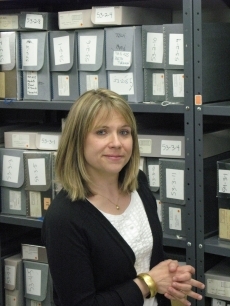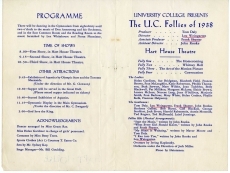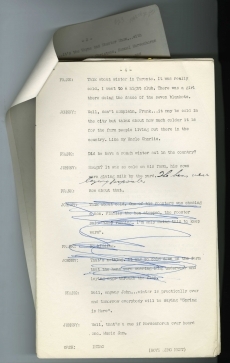A New Director Joins the OJA
I am absolutely delighted to join the Ontario Jewish Archives as Director and to introduce myself to both the Jewish communities of Ontario and to the national and international networks of archives. I look forward to guiding this extraordinary organization into the next chapter of its distinguished history. After living away from Toronto for close to thirteen years, I am thrilled to return to a vibrant cosmopolitan city alive with thriving cultural institutions of all shapes and sizes, neighbourhoods with distinctive character, and delicious restaurants!
Throughout my career, I have been committed to engaging audiences with stories that present multiple perspectives on Jewish culture, tradition, and history. Working with artists, scholars, students, archivists, and collectors, I create experiences that make Jewish values and ideas relevant and accessible to audiences of all ages and backgrounds. I look forward to bringing these skills to the OJA, an institution that is bursting with stories waiting to be told. Over my first few weeks here, I have had the pleasure (with the support of my crackerjack team of archivists—Donna Bernardo-Ceriz, Melissa Caza, and George Wharton) of discovering some of these stories. Not only have I learned so much about the foundation of the Jewish community but also about the building of the City of Toronto, the province of Ontario, and even about my own family. The OJA is rich in legends, mysteries, tales, and a few bubbe-meise and I look forward to sharing them with you.
I plan to start connecting audiences with a selection from our archives right away through a newly launched Facebook page: http://www.facebook.com/OntarioJewishArchives. I invite you to join me as I explore the Archives. I will regularly post photos, video, and other records along with comments and questions so you too can engage with the material and learn something new. And, I want to create a dialogue so please add your own photos and comments. And, remember, we do want to collect these stories in the Archives, not just online. If you are interested in donating materials, please contact us: oja1@ujafed.org.
I look forward to creating exhibitions on all of the UJA’s campuses and in other venues that further explore the collection and engage visitors in unexpected and surprising ways. I plan to invite visual artists and writers to create new works of art inspired by items in the Archives.
Another one of my goals is to strengthen the collection and fill in the existing gaps. We definitely need more documentation from the recent past, 1970s to the present and I want to make sure that the Archives represents both affiliated and unaffiliated members of the community. I plan to reach out to the Day Schools, the Sephardic community, the various summer camps, the gay and lesbian community, the synagogues, the creative community, and the youth and student organizations that are all so central to the Jewish experience in Ontario. These partnerships with the OJA are so important in preserving the community’s stories but also in making them more accessible to a wide range of users.
This is the moment to transform the OJA into a dynamic resource that reflects both the past and the present and that fully embraces the unlimited potential of today’s technology. I hope you will join us at the OJA to learn more about the past and the present. Our stories are your stories!
Dara Solomon
Director, Ontario Jewish Archives




